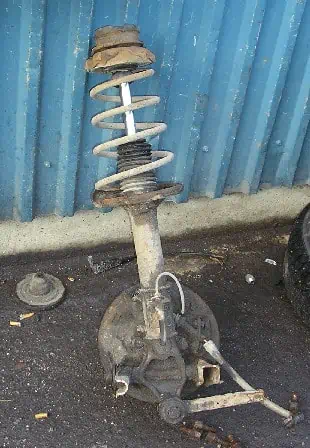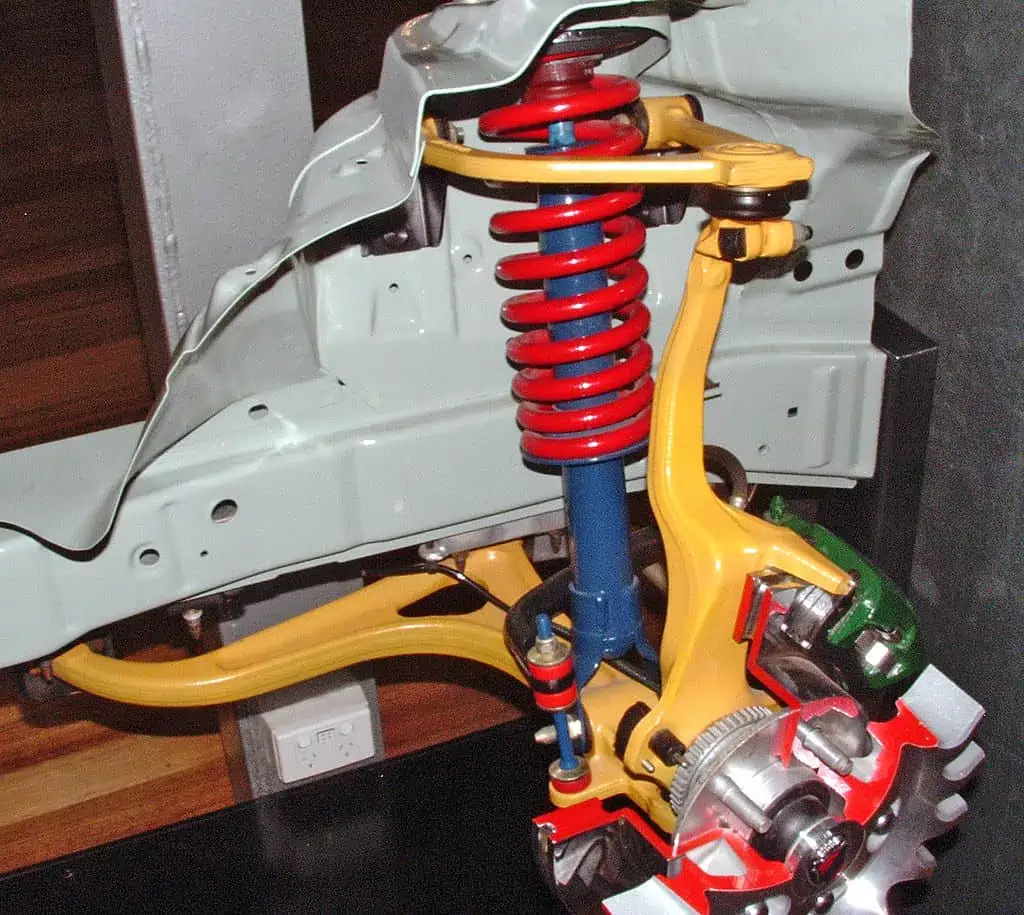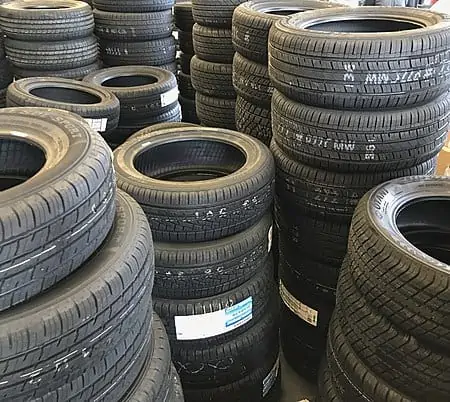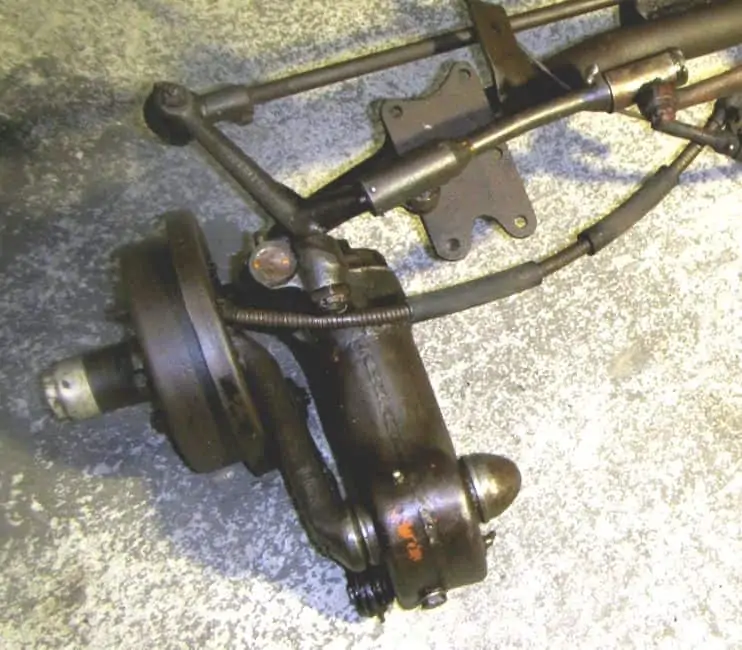One of the less well-known components of a car’s suspension system is the strut mount. It is readily overshadowed by other suspension-related parts like shock absorbers and struts because it is small, flat, and nondescript.
Even though it’s frequently disregarded, this part is essential for the suspension system to work properly. Strange noises, poor handling, and an uncomfortable ride can all be symptoms of a damaged strut mount.
The entire performance and quality of a car’s suspension system are crucial to the SUV, car, or truck’s effective mobility. The functions of a car suspension system go far beyond dampening and reducing vibrations.
A smooth, stress-free ride is made possible by the harmonious cooperation of all the suspension parts in a vehicle.
Some of these parts, however, are crucial since they act as the struts. On wide driving pavements, struts serve as dampers to provide an even, smooth, and high-quality driving experience.
For the strut to function at its best, a strong mount must be fixed to it. The front wheel alignments depend on the strut mounts, which also lessen noise and vibration transmission.
The pressures placed on the strut mounts cause them to deteriorate with time, necessitating a planned replacement. When this occurs, it mounts failure symptoms and projects a few struts.
This page will go over symptoms, procedures, and strut mount replacement.
A Strut Mount: What Is It?
A strut mount, as its name suggests, is a part of the suspension that joins a strut to the car. It lessens vibration and noise in cars, as was already mentioned. Automakers and aftermarket manufacturers create front struts with strut bearing plates or strut mount bushings, which operate as a pivot for the steering.
MacPherson strut suspension by Liftarn / CC BY-SA 3.0. For strut suspension, which has it’s top positioned exceptionally high in the car’s body and its bottom connected to the lower control arm, the shock absorber, and the spring are often merged into one component.
One side of a strut mount is attached to the strut, and the other side is attached to the vehicle. It features a central section made of a substance that resembles rubber to assist dampen noise and vibrations as the vehicle rises and falls over portholes and bumps. A strut mount’s main purpose is to absorb vibrations, noise, and jarring impacts and lessen their transmission to the vehicle.
A crucial element that improves the steering response and smoothness is the bearing or bushing on the strut mount.
What Is the Purpose of a Strut Mount In a Car?
The strut mount is fastened to the car directly on one side while being connected to the strut on the other. There is a rubber substance that acts as insulation between them.
The force generated by the impact against the mount occurs when the vehicle travels over lumps and imperfections. Because the mount absorbs these pushing and pulling pressures, the effects and noise inside the car’s cabin are kept to a minimum.
With a bearing installed, front struts can also function as a component of the steering system. One on each side acts as a steering pivot, which is necessary for the quick response and smooth movement.
Where Is the Location of a Strut Mount In a Car?
The strut mount is mounted to the vehicle’s strut, just as it sounds. It connects the vehicle’s suspension strut to the latter.
A bearing plate or bearing that serves as the steering pivot may be included in the front strut mounts, performing a dual function. Rubber is used in strut mounts as an insulator against noise and vibration.
What are the Common Bad Strut Mount Symptoms In a Car?
If the strut mount breaks down, it will affect how well the car drives because it is essential for cushioning, minimizing noise and vibration, and holding the vehicle in motion. Here are a few signs of a terrible strut that you need to be aware of.
1. Unusual Noise
You have a worn-out strut mount if you hear strut mount noise over bumps in the road or while moving (clunking or squeaking sounds).
Due to a lack of strut insulation, the noise is caused by two or more system components colliding with one another. This noise is audible when twisting the steering wheel as well.
2. Extraordinary Vibrations
As I’ve stated time and time again, strut mounts absorb and lessen vehicle vibration. They won’t be able to carry out this function if they fail. The potential insulating properties of a poor strut mount won’t be there, leading to excessive road vibration.
3. Damaged Rubber
It’s time to see your dealership for a strut replacement if the rubber within the strut mount has a crack or has deteriorated. When you suspect a broken strut mount, look out for this symptom.
4. Corrosion
Since most manufacturers make strut mounts out of metal, they may deteriorate over time, especially if they are exposed to moisture and are driven on salty roads frequently.
Double wishbone suspension by RB30DE / CC BY-SA 3.0. The risk of premature wear to different steering and suspension system components of a vehicle increases with every sizable free-play permitted by a faulty strut mount. This is because each of these components will experience much more stress as a result of undamped shock-loading.
5. Unbalanced Tire Wear
Uneven tire wear may indicate that your strut mount needs to be replaced if it is damaged. Uneven tire wear might be caused by a broken strut mount that shifts out of alignment and drags sideways as you drive.
6. Steering Problems
Some automakers incorporate a steering pivot within the strut mount. This suggests that driving could have an impact on the smoothness, mobility, and overall response time of the steering. Once more, because the steering and suspension systems are interconnected, steering system failures are probable when the suspension system fails.
7. Extraordinary Movements
Strut mounts soften a vehicle’s motion and stop it from moving too much over potholes and other uneven surfaces. Damage will result in excessive movement and the inability to maintain the stability of the strut. Even the slightest bounce could cause excessive movement as a result of this.
8. Defective Strut
A strong strut mount can support the weight of the vehicle and other suspension parts. Poor ones cannot, which leads to strut failure and knocking against other suspension parts. Parts wear will be hastened as a result.
Why Do Bad Strut Mount Symptoms Occur?
The majority of the time, strut mount failure results from regular wear and strain. Struts and the mounts to which they are attached on a vehicle are subjected to almost continual movement as it travels along the road. A vehicle’s weight is still directly transferred to its struts and strut mounts even when it is at rest; there is no exception.
In essence, the strut mounts of a vehicle start to wear as soon as such components are mounted and then wear mercilessly moving ahead. A vehicle’s strut mount is constantly being stressed at all times.
Through ongoing exposure to numerous environmental stressors, this level of wear is further made worse. Over time, the strut mounts of a car suffer damage from rainwater, ice, and road salt, which hastens their eventual collapse.
What Takes Place When a Strut Mount Totally Fails?
You should never, under any circumstances, deliberately drive with a damaged or otherwise compromised strut mount. There might be problems if such a sum failed.
Mechanically speaking, a strut may “clunk” around if an upper strut mount failed, which would be bad for a vehicle’s ride quality.
Any significant free-play allowed by a failed strut mount also increases the danger of premature wear to various steering and suspension system parts of a vehicle. This is due to the significantly increased stress that undamped shock-loading will place on each of these components.
Additionally, strut mount failure is unquestionably a safety concern. This kind of mount failure might change the suspension geometry, which can make driving conditions dangerous. A vehicle’s steering and handling may be impaired under some circumstances.
How Much Does Bad Strut Mount Replacement Cost?
Automotive tires by HopsonRoad (Stephen Flanders) / CC BY-SA 4.0. If your strut mount is damaged, uneven tire wear may be an indication that it needs to be replaced. A damaged strut mount that slips out of alignment and drags sideways as you drive may be the source of uneven tire wear.
An aftermarket strut mount might cost anything from $20 to $300. This does not include installation; it is simply for the parts. Rear and front strut mount repair costs vary depending on the make and model of your vehicle, where you live, and how many you need to replace.
Replace the strut mounts in pairs if possible. They must have driven on the same pavement, carried the same load, and covered the same number of miles. So, if one fails, the other is probably losing its effectiveness.
Replace the damaged strut mount with the opposite side at all times. The same weight capacity on the axles is ensured by swapping out the strut mounts in pairs, providing responsive handling and equal height.
Procedure for Replacing a Bad Strut Mount
Although replacing a strut mount might be a time-consuming task, doing so will only take 10 to 20 minutes if you follow the guidelines below.
On top of the strut is the strut mount. Lift your hood and give your car a bounce if you suspect a damaged strut mount. Verify whether the strut mount moves excessively. If it does, the existing strut mount is poor and needs to be changed. It has an internal rubber bushing, and the excessive movement indicates that the bushing is cracked.
Here’s an easy procedure to repair or eliminate top strut mount noise:
- Suspend the car after raising it
- Wheel covers and hubcaps should be taken off.
- Remove the tires’ fasteners.
- The tie rods, stabilizer linkage, and hub housing should all be removed from the strut assembly.
- Remove the strut by wriggling it away from the hub housing.
- Disengage the three or four mounting bolts.
- Completely remove the strut from the car.
- Examine and mark the arrow mark on the old mount.
- A similar arrow mark should be present on the replacement strut mount.
- Compress the strut spring by tying it between two compressors.
- Separate the mount, spring, and strut by unfastening the strut mount nut.
- Put the spring back on after obtaining the new strut.
- Fix the bellows if you have them.
- Adjust and tighten the replacement strut mount.
- Remember to position the strut mount correctly before tightening the mounting nut.
- Remove the two compressors’ bolts, then tighten the nut.
- Reverse the procedure to fix the strut mount.
How to Evaluate a New Strut Mount
The best course of action when your strut mount is worn out is to purchase an entirely new assembly that comes with a new strut mount, shock, spring, etc. To disassemble the strut, no special tools are needed.
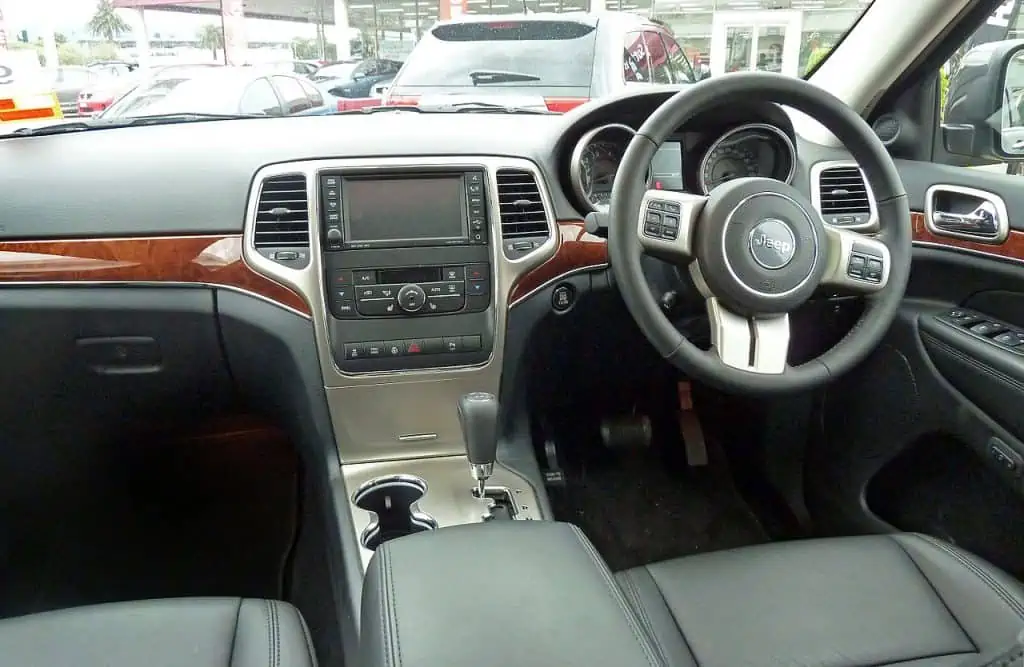
Important Information: If you are unsure how to disassemble the strut or lack the necessary equipment, do not attempt to do so. Without the proper equipment or knowledge, working on the spring risks catastrophic damage. When you replace the entire strut, you avoid the risk of attempting to disassemble the strut, which is once more extremely risky.
The numerous alternatives available when looking for a new strut mount can be perplexing. Here are some things to consider to help you limit your options:
1. The Application
Before investing in a strut mount for your car’s suspension, always make sure it will fit. To ensure performance and simple installation, the replacement should be compatible with the year, make, and model of your vehicle.
2. The Quality
The new strut mount is an essential part of your car’s suspension system, therefore it needs to be strong and resistant to early wear. You have two options for replacing your factory-installed strut mount: either choose a substitute made of the same material or spend more money on a better strut mount.
If you choose the latter, be sure the improved replacement is compatible with your vehicle by speaking with your mechanic before making any decisions.
To ensure long-term functionality, be sure to select a high-quality mount. Replace your strut mounts with strong ones to improve your car’s ride and handling.
Configurations for Strut Suspension
The shock absorber and the spring are typically combined into one component for strut suspension, which has its top positioned extremely high in the car’s body and its bottom connected to the lower control arm. The center of gravity of the car is lowered as a result, which is advantageous.
The steering axis for strut suspension typically runs from the lower ball joint through the middle of the shock absorber, with a bearing on the top of the strut carrying the weight of that corner of the vehicle (as opposed to non-strut suspension, which has upper and lower ball joints that provide the steering axis for turning the wheels).
When replacing struts with two bolts fastened to the spindle at the bottom, alignment must be verified. Additionally, an alignment check will be required if the top of the strut, where it is attached to the vehicle body (using three bolts), is installed in slotted holes for alignment changes.
The suspension system used by Hondas had two ball joints, a “wishbone” connecting the strut to the lower control arm, and high-mounted bolts. The steering axis does not pass through the strut if there are two ball joints. This design can be found on various Ford and other Asian-made vehicles.
On the front struts, where the strut attaches to the vehicle body (shock tower) and the steering axis does pass through the strut, there is a bearing in the strut mount. Strange steering noises and the other symptoms stated above can occur when that bearing becomes dry.
The front right suspension unit by Wdwdbot / CC BY-SA 4.0. The new strut mount is a crucial component of the suspension system of your car, therefore it must be durable and resistant to early wear.
Is It Safe to Drive a Car with Bad Strut Mount Symptoms?
Even though it is feasible to drive with a damaged strut mount, do not. Instead, swap it out. When you’re traveling over uneven pavement, struts minimize road bounce. Struts on the front wheels, which are crucial for alignment and general handling, are connected by automakers to the steering wheel.
You won’t feel confident behind the wheel if your strut is bad because it will be uncomfortable for you and your passengers. Other suspension parts may also sustain damage.
Can Strut Mounts Be Replaced Without Replacing Struts?
It is not essential to change the strut as well. Examine the strut itself as well when examining and replacing the strut mounts. The time is now to replace a strut if it is damaged or weak.
What Is the Time Span of Strut Mounts?
Depending on where you live and how you drive, an OEM or high-end aftermarket strut mount will last between 7 and 10 years. The lifespan of the vehicle’s strut mount is shortened if you frequently drive off the road on salty pavements or reside or travel in rural areas with poor roads.
In contrast, if you live in a city and drive your car carefully, the strut mount might last the entire life of the vehicle. Examine the strut mount in addition to the shocks.
When changing a coil spring or strut due to wear or aging, make sure to check the strut mount for the best driving experience. Have a qualified mechanic inspect and replace the strut mount since it can fail or break, leading to various driving difficulties, odd noises, and harm to other suspension parts.
The complete spring and strut assembly must be taken apart to replace a strut mount. Therefore, completing the task once is significantly simpler and less expensive than doing it twice.
The Conclusion
Vehicle strut mounts have a significant impact on other suspension system parts. Therefore, it’s crucial to visit an ASE-certified mechanic to evaluate the strut mount and the entire strut assembly when your car exhibits any of the strut mount failure symptoms covered in this article. Do not wait to repair the strut mount if the technician finds one that is damaged or worn out.
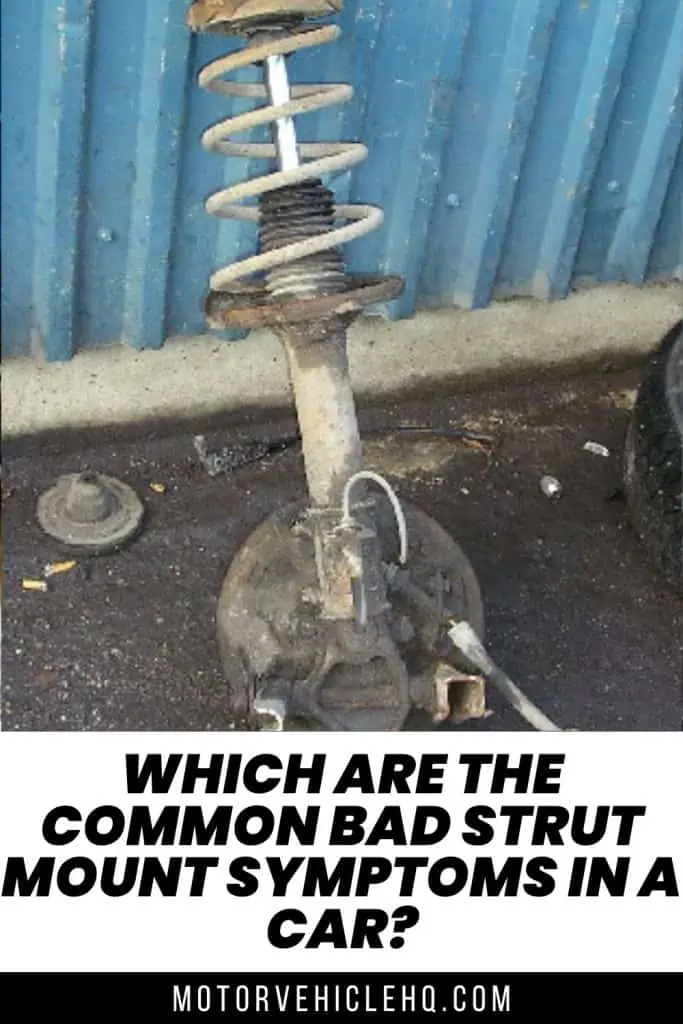
MacPherson strut suspension by Liftarn / CC BY-SA 3.0

Jim Wicks is the founder of MotorVehicleHQ. With over two decades of experience in the automotive industry and a degree in Automotive Technology, Jim is a certified car expert who has worked in various roles ranging from a mechanic, car dealership manager, to a racing car driver. He has owned more than 20 cars over the past 15 years. Ask him about any vehicle you see on the road and he can tell you the make, model and year. He loves the aesthetics of all things cars, and keeps his vehicles in pristine condition.
In his free time, Jim enjoys getting his hands dirty under the hood of a classic car or taking long drives along the country roads. His favorite car? A 1967 Shelby GT500, a true classic that, according to Jim, “represents the pure essence of American muscle.”
